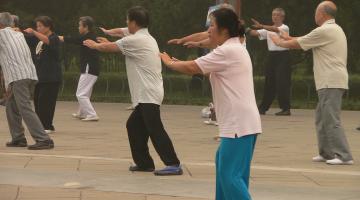Harnessing Mindfulness and Meditation to Control Cravings in Recovery
During recovery, one of the biggest challenges is controlling cravings. Impulsivity is a side effect of addiction, and it can manifest in problems with self-regulation and self-control, particularly where emotions and subsequent behaviors are concerned. It's this impulsivity and cravings that puts people in recovery at risk for relapse without the right tools.
Thankfully, you can harness mindfulness and meditation to help you better control cravings in recovery.
How to Use Mindfulness to Control Cravings in Recovery
With recovery, you cannot control the stress you face or its direct influence on cravings, but you can control how you respond to it.
Mindfulness is a holistic practice that you can apply to help you increase your personal awareness of the thoughts, emotions, and behaviors you experience when faced with cravings. That deeper understanding can help you control some of your impulsive symptoms by focusing your awareness outside of the impulsiveness of cravings and, instead, on your environment.
For example:
Margaret recently completed her inpatient drug rehab, but now she is having trouble being around certain coworkers. She starts to feel irritable and anxious with trembling hands and a bit of a headache.
Using mindfulness techniques, Margaret can stop and reflect, putting cognitive distance between her immediate feelings of irritability/ anxiety and the cravings with which she is struggling.
One technique she uses is to think, “I notice I am having the thought that I am irritable and anxious,” instead of “I am irritable and anxious.”
This mindful technique helps her to be aware of what she's feeling without letting it control her behaviors.
Similarly, Margaret might use mindfulness and meditation to recognize that the emotions she is feeling and the physical trembling and headache have to do with the fact that she used to drink heavily with these coworkers, and being around them causes her anxiety because she is terrified that they will invite her out for a drink and she either won’t have the strength to say ‘no’ or she will relapse.
That level of personal awareness and cognizance can help someone like Margaret stay away from the people who might be causing her that much distress while also practicing skills like reminding herself of the progress she has made and applying coping techniques to control her cravings.
Sitting with Discomfort
Emotional regulation skills are a subset of mindfulness. While mindfulness teaches you to be aware and accepting of your emotions without judgment, emotional regulation is the next step in recovery, teaching you to accept your emotions, recognize your goals, and avoid giving in to cravings.
One of the key benefits of mindfulness and emotional regulation skills is the ability to acknowledge and accept your emotions without judgment. One of the biggest reasons that people end up self-medicating or relapsing after cravings is that they try to suppress, mask, or hide how they are feeling.
It's a natural part of recovery to struggle with cravings, and there is no shame in that. But the more readily you admit that you are struggling with cravings, or someone like Margaret admits that she is worried about her friends asking her to drink and her inability to say no, the less likely you are to cause yourself additional suffering.
Openly acknowledging your issues teaches you to accept the discomfort of those emotions, which can help you moderate their intensity and control your reactions to them.
How to Use Meditation to Control Cravings in Recovery
Meditation is an incredibly easy way to control cravings in recovery because it can be practiced at any time, in any location, and in several forms.
Meditation does not have to be limited to seated meditation, with your eyes closed, in a serene and natural environment. Meditation can be:
- Walking meditation, where you focus your attention on the present and away from cravings by repeating things such as “left, right” in line with your footsteps and noticing the feeling of each footstep
- Moving meditation like Tai Chi or Qi Gong, where you are actively focused on your breathing and holding certain positions without a great deal of strenuous activity
- Eating meditation is where you take the time to be mindful and cognizant of all of the senses involved in your meal, as well as some reflection on how your meal came to be
Meditation is a chance for you to ground your emotions and your thoughts in the present. Success comes from being able to pull away from ruminations about the past or worries about the future. It's these ruminations and worries that tend to contribute to cravings and relapse.
Tip: Start by practicing with guided meditation so that your thoughts don't run away from you. Do this for 5 minutes at a time, if you can, every day, and gradually increase the length of time you are able to meditate. The more often you do this the easier it will be to form a habit and to apply meditation when you need it. Eventually, you will be able to do meditation without listening to an audio guide, and you can apply this whenever you feel cravings.
Overall, you can harness the power of mindfulness and meditation as a holistic approach to gain control over emotions, behaviors, and cravings in recovery. These tools help you better recognize your emotional state and sit with any discomfort you might experience rather than trying to run from it or mask it. The more open you are toward all of your feelings, including your cravings, the better position you will be in to handle them.
Southern Sky Recovery is a top-rated drug rehab in Bluffton, South Carolina. We specialize in addiction treatment for a variety of substances. Contact us today to learn more.
More to Read:
Previous Posts:








